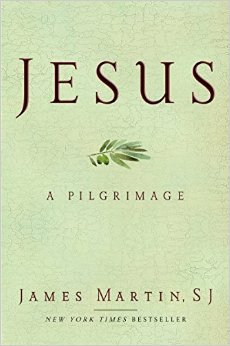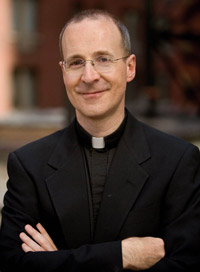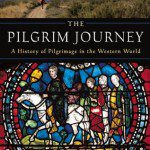Several years ago I visited the Abbey of Gethsemani in Kentucky, the Trappist monastery where Thomas Merton spent many decades. I was excited to get the chance to interview the Guest Master at the abbey, but as the time approached for our meeting I found myself getting nervous. How does one interview a person who’s taken a vow of silence? (Well, they’re allowed to talk a little, but you know what I mean.) What could I possibly ask that didn’t sound trite to someone so deeply immersed in the contemplative life?
I entered the monk’s office with some trepidation, sat down, and asked my first question: “What do you hope people will take with them from their time at Gethsemani?”
The monk leaned back in his chair and closed his eyes. Seconds passed. I could hear the clock ticking on the wall. More seconds passed. The clock ticked on. I wondered if perhaps he’d dozed off. I fiddled with my pen and notebook, looking at the other questions I’d jotted down. I knew I only had a few minutes with the monk, and the clock kept ticking and ticking as the seconds stretched into minutes. I wondered if I should leave him in peace by sneaking out the door or wake him up.
Finally the monk opened his eyes and leaned forward. He clearly hadn’t been napping, but instead thinking. And then he answered my question with a single word: “Jesus.”
And that’s the story of the shortest interview I’ve ever conducted in my writing career. For honestly, I couldn’t think of a single question after that.
 Which brings me to the topic of the day, James Martin’s wonderful new book Jesus: A Pilgrimage
Which brings me to the topic of the day, James Martin’s wonderful new book Jesus: A Pilgrimage. Faithful readers of this blog will recognize Martin’s name, for I’ve recommended his books before (most recently, The Jesuit Guide to (Almost) Everything: A Spirituality for Real Life
. Martin is a Jesuit priest and gifted writer, but here’s what I appreciate the most about him: he seems like the sort of person who’d be a good friend. His writing is both accessible and wise, like talking to someone who can teach you something without seeming preachy.
Unlike that Trappist monk, Martin has a lot to say about Jesus. His book is a blend of genres: a travelogue of a trip he made to holy sites in Israel, an overview of current Biblical scholarship about the historical Jesus, and a memoir detailing Martin’s own spiritual struggles and explorations. Most intriguing of all, the book is deeply shaped by his years of prayer as a Jesuit. The Jesuits practice a form of contemplation in which they put themselves into Biblical stories, imagining they are in the middle of the scenes. Martin frequently talks about insights that have come to him as a result of these meditations, often coming up with strikingly original and moving reflections that opened up the Gospel stories for me.
I also enjoyed getting the chance to re-visit sites I’d seen in Israel, from the small town of Capernaum on the shore of the Sea of Galilee to the Church of the Holy Sepulchre in Jerusalem (I was pleased that Martin found it as intriguing, mystical and peculiar as I had). Martin writes that touring the Holy Land is like seeing the home of a friend you’ve known for a long time. Even if you think you know a lot about someone, visiting where they live and the places that shaped them brings new understanding. That’s certainly true for anyone fortunate enough to see where Jesus walked, lived and taught (and this is why the Holy Land is sometimes referred to as the Fifth Gospel).
In the book, it’s often the small details that are the most evocative. While visiting the site that tradition says is associated with the miracle of the multiplying of the loaves and fishes, for example, Martin writes of the boy who brought Jesus five barley loaves and two fish. It was a child who made the miracle possible, he says, and then goes on to tell of how many times it happens that something we believe to be small becomes something big for someone else:
We may feel that our efforts our inadequate. We try to help our friends and family, but nothing seems to work. We try to fix our children’s lives, but it doesn’t seem to help. We try to seek forgiveness, but others are still resentful. We try to encourage our friends, but they still seem disconsolate. We try to love, but it doesn’t seem enough.
But Jesus accepts what we give, blesses it, breaks it open, and magnifies it. Often in ways that we don’t see or cannot see. Or will not be able to see in this lifetime. Who knows what a kind word does? Who knows what a single act of charity will do? Sometimes the smallest word or gesture can change a life. A few years ago I told a Jesuit priest how what he had said to me on retreat helped me through a tough time. When I repeated what he had told me–word for word–he laughed and said he didn’t even remember saying it. Yet his loaves and fishes had been multiplied.
 I’ve been savoring this book for months, reading just a few pages at a time because I was enjoying it so. It’s helped me read the Gospels with fresh eyes and meet a more complex, intriguing Jesus in its stories.
I’ve been savoring this book for months, reading just a few pages at a time because I was enjoying it so. It’s helped me read the Gospels with fresh eyes and meet a more complex, intriguing Jesus in its stories.
The book is heartfelt but not cloying, intellectually challenging but not dry. It’s worth spending time with Martin as he walks in the footsteps of the man to whom he has dedicated his life.















